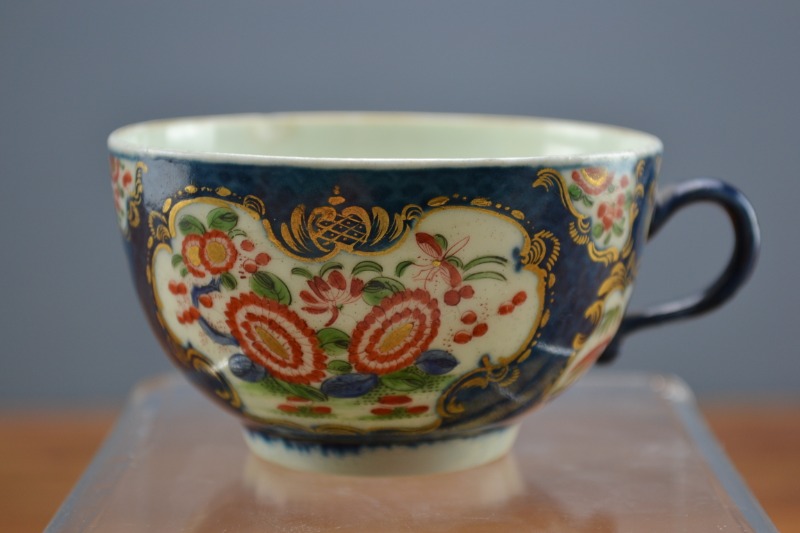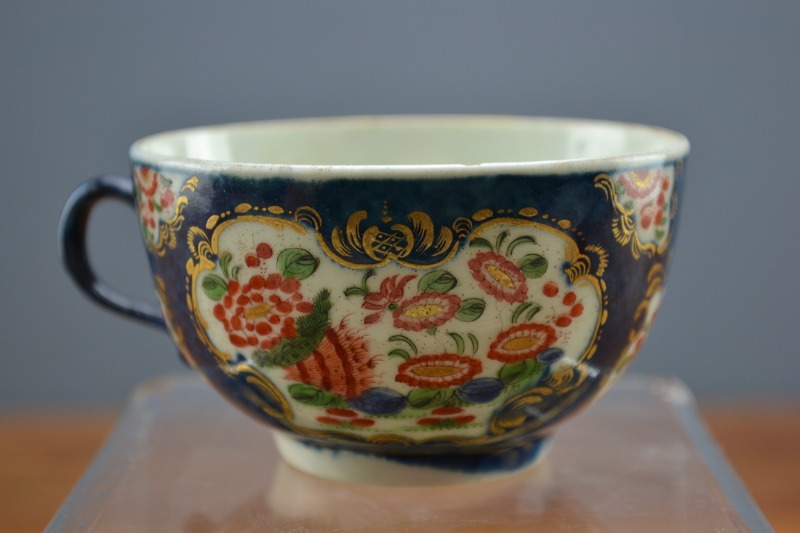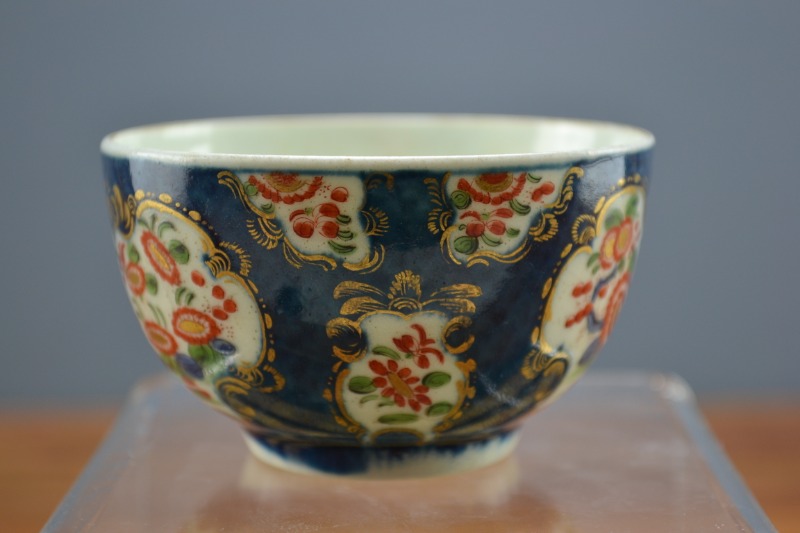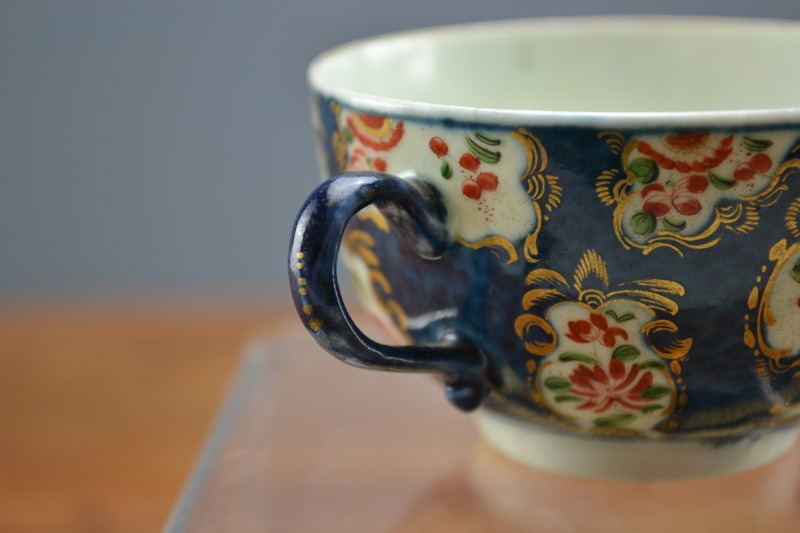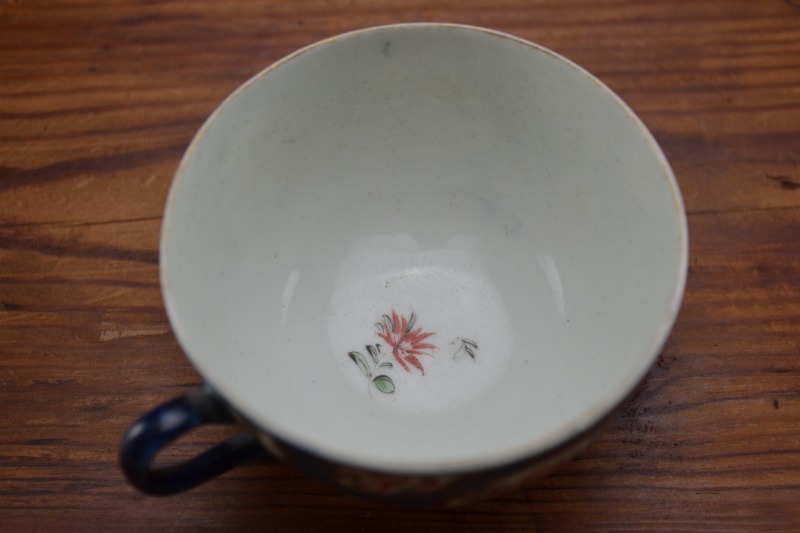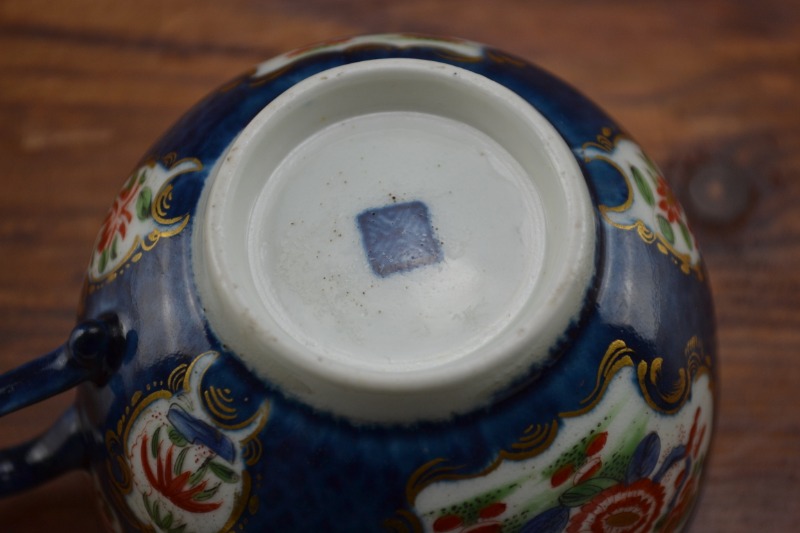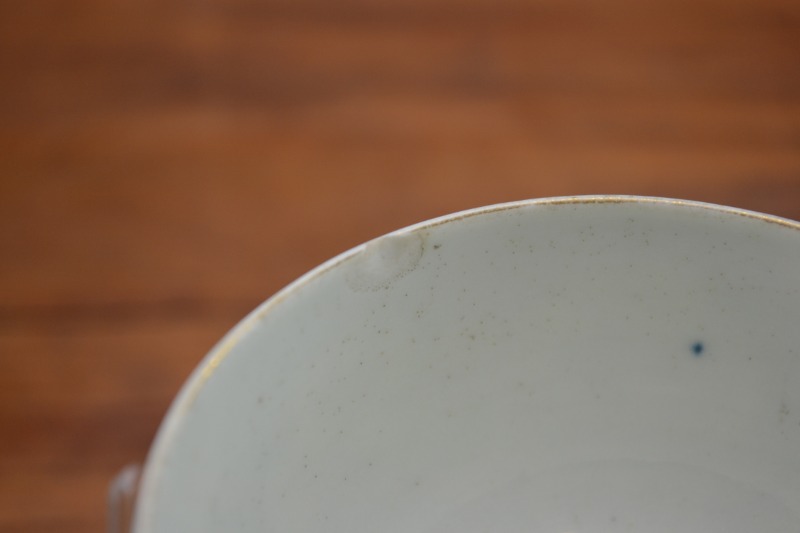First Period Worcester Kakiemon Enameled Cup, 1755 – 1770
Age:
c. 1755 – 1770
Material:
Porcelain
Dimensions:
Shipping:
Standard Parcel
Price:
£ 50
This item is available to view and buy at:
Carse of Cambus
Doune
Stirlingshire
FK16 6HG
An extremely fine, hand-painted Worcester cup with loop handle, decorated with Kakiemon-inspired flowers within cartouches on a deep blue cobalt ground. The cartouches are outlined in gilt with rococo scrolls. The blue pseudo Chinese mark on the base dates it to first period Worcester, 1755 – 1770.
The stylised chrysanthemums are painted in enamels in Japanese Kakiemon colours of yellow, iron red and pea green against a deep underglaze blue. A teapot of the same pattern can be seen in the V&A (Museum number: C.372&A-1940)
The painting is in excellent condition with no rubbing to either the enamel or gilding. There is some rubbing to the glaze on the handle and a small frit to the very inside edge of rim which could easily be restored.
The Worcester porcelain works were founded at Warmstry House in 1751 by a group of 15 parties. Dr John Wall perfected a recipe for a soft paste porcelain that could withstand boiling water, and by 1755 Worcester was making the best English blue and white tea wares that money could buy.
Kakiemon is a style of Japanese porcelain using over-glaze enamel decoration. It was originally produced at the factories around Arita, in Japan‘s Hizen province (today, Saga Prefecture) from the Edo period‘s mid-17th century onwards. The quality of its decoration was highly prized in the West and widely imitated by major European porcelain manufacturers during the Rococo period.

